St Andrew's Uniting (formerly Presbyterian) Church
Singleton
Charles Richardson 1891, 3m., 15 sp. st., mechanical
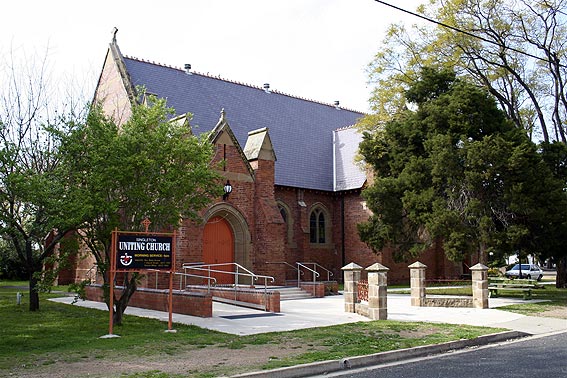
Rushworth records that the instrument was probably built in 1885 by Charles Richardson, of Sydney, for Vakrupa, the Wollongong residence of Ernest L. Sutton. [2] It was installed in its present location in 1920 at a cost of £550 and survives in this form today with only minor alterations: most of the changes were made in or before 1920. Like most of the other historic organs inspected during the conference, John Stiller documented the instrument in 1985, providing the following valuable observations:
a) The Great Open Diapason, Principal and Choir Salcional have stamped inscriptions, while all other fluework has hand-written inscriptions.
b) The Choir Clarionet has stamped inscriptions “Vox Sw”.
c) The top octave of the Pedal Bass Flute was provided in or before 1920.
d) The slider widths of the Great and Swell soundboards bear no relationship whatever to the ranks of pipes now standing above each slider.
e) The original hitch-down pedal has been replaced by a balanced pedal.
f) One of two original bellows has been removed, the remaining one has been rebuilt as single rise. The hand-blowing mechanism has been removed.
g) Open metal fluework has been fitted with tuning slides.
h) The casework was widened to fit the present location. [3]
Stiller also observed that this instrument is among the finest surviving examples of Richardson’s work and despite a specification based on a predominance of unison tone, has a superb build up. He noted that the Great Open Diapason and Principal are voiced in a manner which is bright, fresh and powerful. This is contrasted by beautifully mellow Flutes and Gedacts, and the delicate strings. The Swell Gamba and Voix Celeste were noted as being tonally superb, while the attractive case was an excellent match for the architecture of the building. [4]
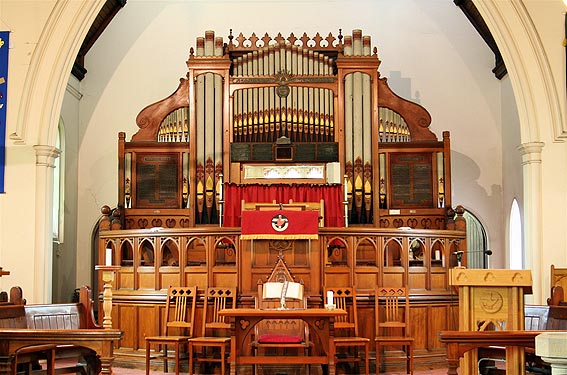
Charles Richardson 1891 (3/15 mechanical)
| GREAT Open Diapason Hohl Flöte Principal Flute SWELL Open Diapason Lieblich Gedact Stop’d Diap. Bass Gamba Voix Celeste Gemshorn Oboe Tremulant CHOIR (Enclosed with Swell) Salcional [sic] Dulciana Clarionet PEDALS Ped. Bourdon Bass Flute |
8 ft. 8 ft. 4 ft. 4 ft. 8 ft. 8 ft. 8 ft. 8 ft. 8 ft. 4 ft. 8 ft. 8 ft. 8 ft. 8 ft. 16 ft. [8 ft.] |
+ * ¶ # ^ A A § |
TC TC TC |
COUPLERS
Swell to Great
Swell to Great Octave
Choir to Great
Great to Pedals
Swell to Pedals
Mechanical action to manuals, stops and couplers
Tubular-pneumatic action to combination action and pedals
Compass 56/30
2 thumb pistons each for Great and Swell
Balanced swell pedal (Swell and Choir in common enclosure)
No. of pipes = 710
Pitch a1 = 446 Hz at 250 C
Wind pressure = 82 mm (3 ¼”)
+ Of Stopped Diapason construction
* Odd label. Pipework labelled as Horn Diapason and draws
Stop’d Diapason Bass also
¶ Draws Gamba also
§ Pitch designation not shown on stopknob
# C-B of stopped wooden pipes - common bass for all Choir stops
^ Of Vox Humana construction
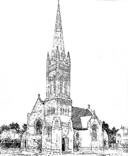
St Andrew’s Uniting Church, Singleton
Architect’s drawing
(supplied by John Maidment)
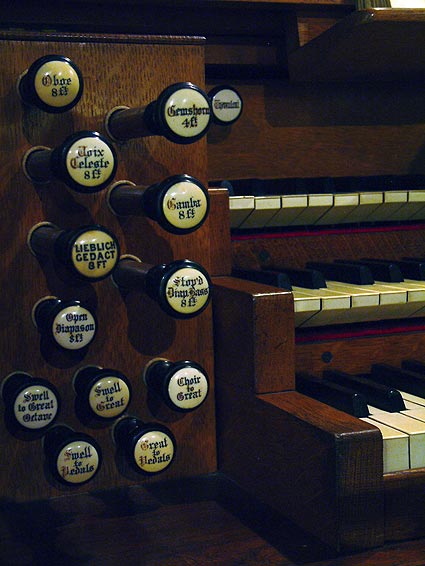 |
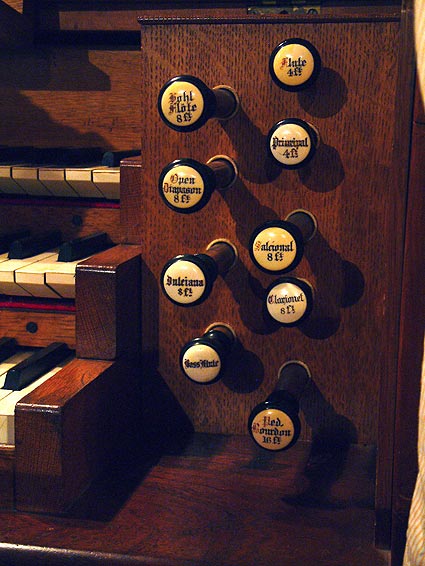 |
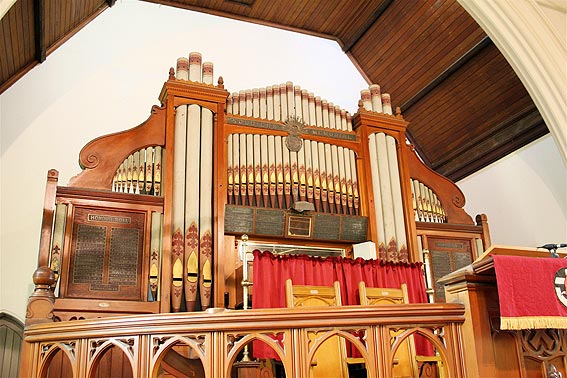
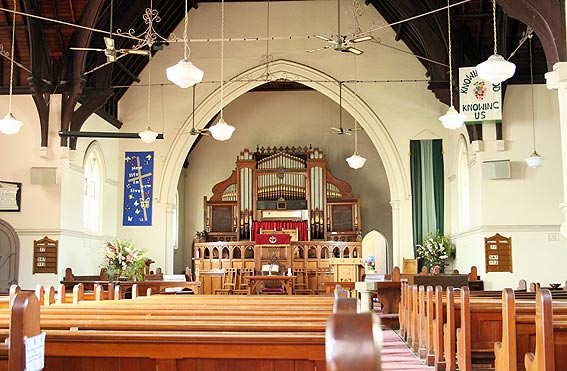
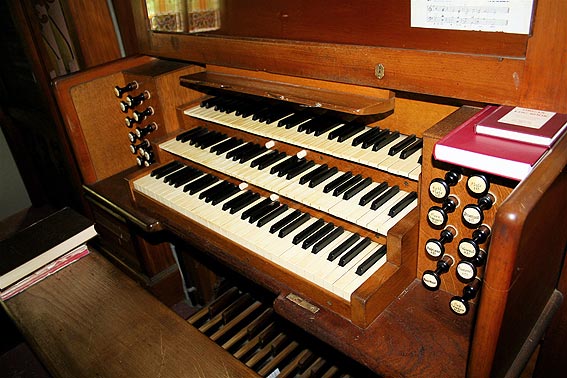
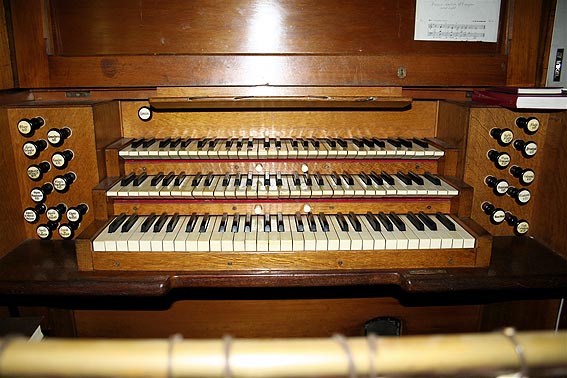
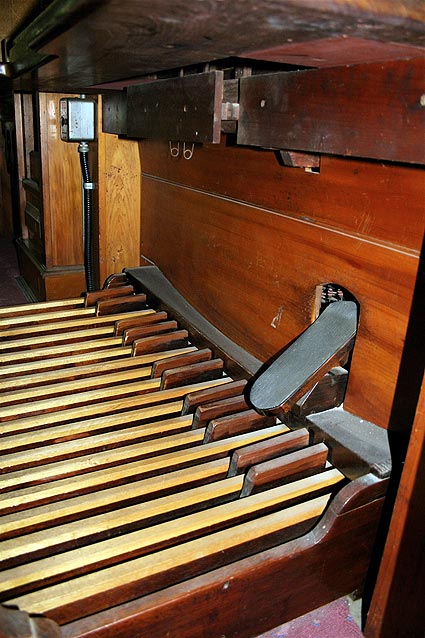



(Oct 1990)
Photos: Trevor Bunning (Sept. 2007)
[1] Rev. James Cameron, Centenary History of the Presbyterian Church in New South Wales. Sydney: Angus & Robertson, 1905, 278 and plate 80, and Rev. C.A. White, The Challenge of the Years: a history of the Presbyterian Church of Australia in the State of New South Wales. Sydney: Angus & Robertson, 1951, 461.
[2] Rushworth, Historic Organs, 127.
[3] John Stiller, “St Andrew’s Uniting Church, Singleton NSW – Detailed Documentation of Pipe Organ built by Charles Richardson”. Organ Historical Trust of Australia, 12 and 13 February 1985. The specification also comes from this source.
[4]
Ibid., 6.
© OHTA 2005